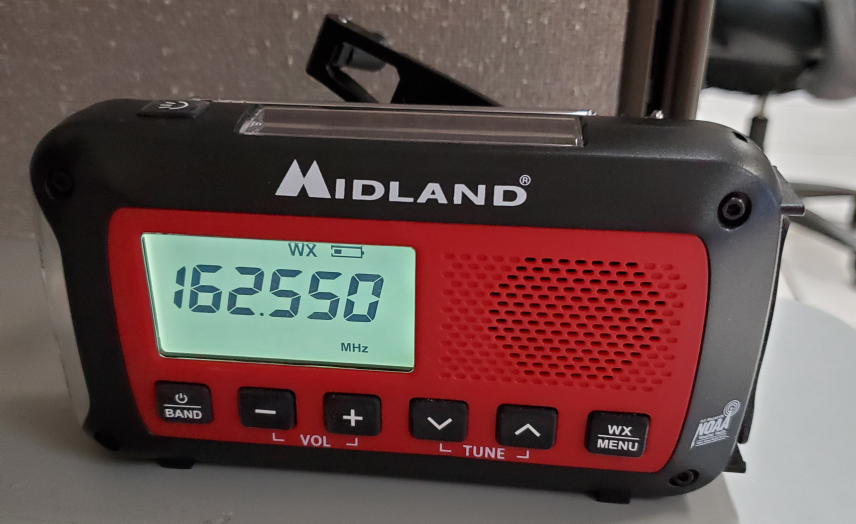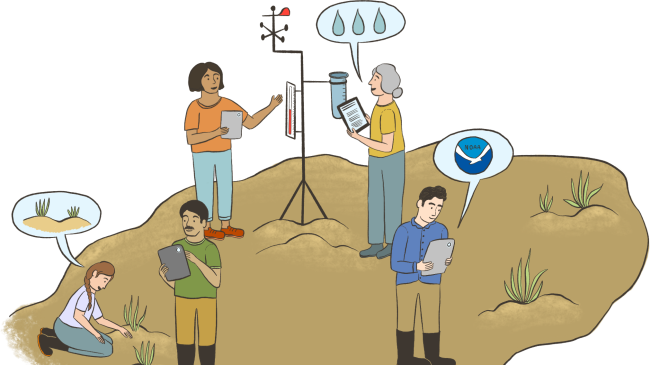Whether it’s the mountainous terrain, the rural nature of the area, or the pockets of extreme poverty, the population of eastern Kentucky is very vulnerable when it comes to severe weather. “Nearly all of our forecast area is vulnerable in some way,” said Jane Marie Wix, Warning Coordination Meteorologist with the National Weather Service (NWS) in Jackson, Kentucky. Following a devastating flooding incident in the region in 2020, one group emerged as particularly at risk: the Amish community.

There are an estimated 367,295 Amish people offsite link in the United States, and the population is growing. While Amish communities vary in their practices, they share a selective and conscientious use of technology, avoiding devices like televisions, personal computers, and smartphones, as well as connections to the U.S. power grid. Unfortunately, when it comes to receiving weather safety information, this means that many communities simply don’t have access to timely resources. “In some ways, as the NWS becomes more technologically advanced, we are leaving some of our rural populations behind,” said Wix.
In March of 2021, the NWS and local partners formed a small task force called WARN — Weather Awareness for a Rural Nation. “Our goal was to do just that,” said Wix, “bring weather awareness and weather resiliency to an otherwise overlooked population.” While their scope includes all rural populations in Appalachia and beyond, they knew they needed to start somewhere. “Given the large, if not massive, scope of the project, it helped to break it down into specific goals. And that first goal was to work with the Amish community,” said Wix.
The WARN Task Force includes Jane Marie Wix from NWS Jackson, Derrick Snyder from NWS Paducah, Tony Edwards from NWS Charleston in West Virginia, and Jason York and Joe Sullivan from Kentucky Emergency Management. The team has compiled a growing toolkit of resources for working with Amish communities. Here are a few of the strategies and tools that they have found to be most effective.
Partnering with agriculture extension agents
The task force learned that many Amish communities, with their focus on agriculture, had established relationships with local county agriculture extension offices. Agriculture and Natural Resources (ANR) extension agents bring practical information to communities through research and education. Putting this knowledge to use, the task force partnered with the University of Kentucky and local county extension agents to learn more about the Amish communities in the region, including how to build successful relationships. Rob Amburgey, the ANR extension agent for Bath County, Kentucky, regularly attends many of the WARN meetings and has proven to be a great asset for the task force.
The task force realized that there were no educational weather safety handouts available for off-grid populations, and so they created them from scratch. The nine handouts include topics such as lightning safety, tornado safety, and heat safety, and a set of worksheets for children. The extension agents were important in helping disseminate this information at their local offices and at events. In addition, the WARN Task Force learned that extension agents produce monthly newsletters, which are sent through the mail and to members of the Amish community, as well as others who may have limited cell phone coverage or internet access. As a result of this partnership, the WARN Task Force now creates monthly articles containing weather and weather safety information pertinent to that time of year, which are then distributed to all Kentucky county ANR agents to be included in their newsletters.
Adding phone lines for accessing weather forecasts
The National Weather Service maintains phone numbers that anyone can call to receive their automated daily weather forecast. While most Amish families don’t have personal phones, landlines are available in communities. The task force realized that some of the most-called lines were ones in areas with large Amish populations. “Another NWS office had dedicated a phone line specifically for a county with a large Amish community, and this phone line got a proportionately higher number of hits per month compared to the others. One of our task force members thought, let's redo it for Kentucky too. Let’s start adding more phone lines,” said Wix. Now, all the offices across the state of Kentucky have expanded this service, and other offices across the country are doing the same.
Creating a solar-powered weather radio that is compatible with Amish ways of life

After a devastating tornado outbreak across the state, members of the task force spoke to Amish community members to learn more. They learned that the Amish do not have weather radios because they are a means to the "outside world” — they usually include AM/FM radio or have to be plugged into an electrical source. There simply wasn't a weather radio on the market that would fit their lifestyle, and so they relied on county sirens (if available) instead. The task force learned that solar powered or crank-operated devices are accepted by many Amish communities, so they partnered with Midland Radio and helped develop a prototype for the first ever Amish Weather Radio to deliver emergency alerts. After receiving feedback at a recent Amish conference, NWS and Midland are making a second, improved prototype that features a gray cover instead of a red cover, no ports, and the ability to receive only alerts that are specific to a particular location. They are hoping that these radios will begin production in early 2023, with communities already expressing interest in buying them once they are ready. In a chance connection, two bloggers who were traveling through the area learned about the task force’s work and the dangers that many Amish families face from weather hazards. They organized a fundraiser offsite link that raised $2,250 to purchase Amish weather radios for local families.
Sharing weather safety information in an Amish newspaper
The WARN Task Force is working with a national Amish newspaper, The Budget, to publish monthly weather articles. These articles cover general, seasonal weather and safety information that is distributed to The Budget’s weekly readership of 50,000 people. The publisher also reached out about advertising the solar-powered weather radio when it becomes available. Ads in The Budget are reserved for products that are generally accepted by Amish communities — a promising sign that the weather radio may be adopted and used.
Across all of these areas and more, the WARN Task Force has found that building relationships has been critical to reaching out to, supporting, and learning from the Amish communities they serve. “We’re learning as we go,” said Wix.
As the task force looks ahead to the future, there is much more work to be done to educate and prepare local off-grid communities. “This current effort to reach out and better serve the Amish communities is just the tip of the iceberg when it comes to dealing with underserved populations across our area,” said Wix. “I am thankful to my other task force members and our vision to continue pushing forward, to be an advocate of change, hope, and most importantly, resiliency across eastern Kentucky, Appalachia, as well as across the country.”



